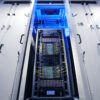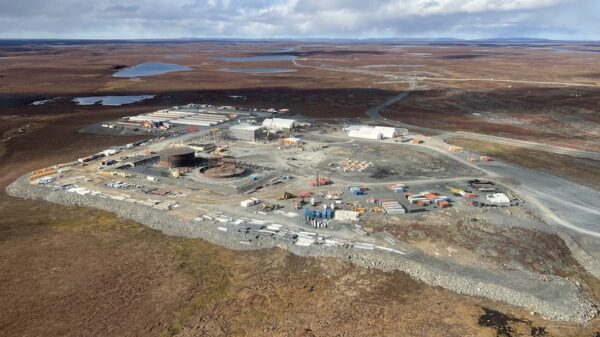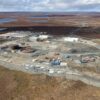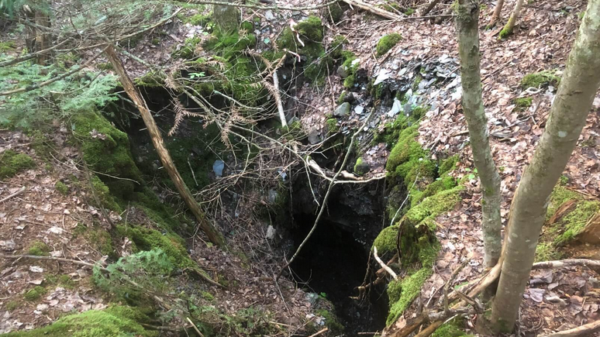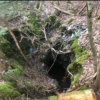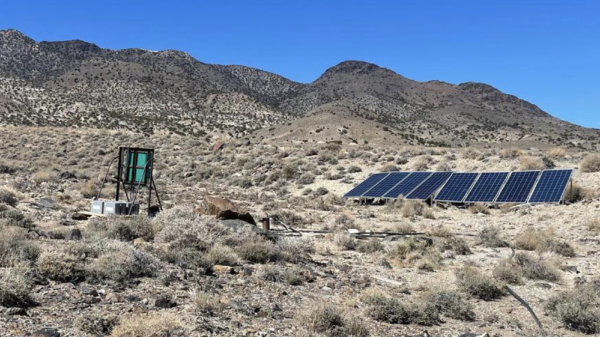A recent paper published in the journal, Nature Geoscience, has linked seismic activity to an accumulation of gold particles in quartz.
Published on Monday, the research suggests gold nugget formation may be due to electricity generated by the pressure of earthquakes. This is called piezoelectricity.
“We found that once gold was on the quartz’s surface, it would actually become the the main focus for further gold to deposit,” said Voisey.
When physical stress is applied to a solid material, it produces an electric voltage. Quartz, composed of silicon and oxygen, is the most abundant piezoelectric mineral on Earth.
The fact that so much of the world’s gold had accumulated in quartz intrigued Voisey.
“It all kind of sounds a bit too convenient that one of the only abundant piezoelectric minerals on Earth [quartz] is also the thing that hosts large gold nuggets,” he said.
Voisey and his colleagues set up an experiment to replicate what they believed was occurring deep underground. The purpose of which was to explore the relationship between gold and quartz.
Most of the world’s gold is believed to reside in the planetary core, where there is enough metal to gild Earth’s surface in a layer 0.5m thick. Over billions of years, some of this gold made its way closer to the surface, carried by super-hot, water-rich fluids that moved through fractures and cracks to the planet’s rocky outer crust.
Read more: Calibre Mining finds higher gold rates at Marathon Pit
Read more: Calibre Mining shareholders approve all matters at annual general meeting
Electricity generated over billions of years may help form gold
Until now, scientists believed that gold precipitated out of these fluids and accumulated as they cooled or underwent chemical changes. However, Voisey and his colleagues were not convinced by this explanation.
One issue, Voisey noted, is that quartz is chemically inert, meaning it doesn’t react with other substances. His team wanted to test if piezoelectricity generated during seismic activity over billions of years played a role in how gold could form as a nugget.
They took six slabs of quartz crystals and suspended them in two different solutions containing gold. The idea was to replicate what might be happening deep below the surface.
The solutions bear simularities in composition to what would be found in super-hot underground fluids. It’s contained either 75 parts per million of dissolved gold or 95 ppm of gold nanoparticles, known as colloidal gold.
Voisey’s team shook the quartz slabs with a motor at a frequency of 20 hertz to replicate seismic waves. As a result, the gold began depositing onto the quartz in both solutions. But as the experiment continued, Voisey noticed something else. The gold accumulated on the previously deposited gold instead of new grains attaching elsewhere on the quartz.
Over time the process could be used to explain the formation of large gold nuggets, according to Voisey.
Read more: Calibre Mining gets environmental permits for Volcan deposit in Nicaragua
Read more: Big name shareholder sells high percentage of its stake in Calibre Mining
Research offers new mechanism for understanding gold deposition
University of Otago emeritus professor of geology Dave Craw has mixed views on it. He noted that the research offers a new mechanism for understanding gold deposition in quartz veins.
“Earthquakes are ubiquitous in orogenic gold-forming environments, and this novel mechanism is a good one to explain the link between gold and quartz in a lot of these deposits,” said Craw.
“I have seen networks like that with gold along microfractures, and this is an entirely plausible process for making that happen.”
However, Craw indicated he wasn’t sure if this process could actually lead to the formation of large nuggets.
“The experiments only produced very small particles of gold, and they haven’t demonstrated this could scale up to make large nuggets, although I suspect they could be right for some situations,” he said.
New insights into gold formation can help exploration and mining geologists. He also hopes the findings will provide useful insights for chemical engineering.
“Something I think would be interesting is if someone used piezoelectricity for the mineral processing of the gold ore,” he said.
“Processing gold ore right now can be fairly expensive. I would like to see if this research would sort of help clean that up or even just reduce the cost.”
.
Follow Joseph Morton on Twitter
joseph@mugglehead.com





